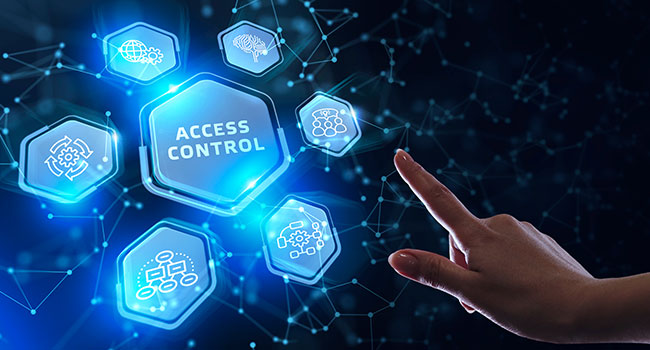
Transitioning to the Cloud
5 reasons to feel secure in the cloud
- By Olivia Peralta
- Apr 01, 2022
Is access control in the cloud truly secure? Most organizations have asked this question when considering a transition from on-premise access control software to a cloud-based system.
View the Expansion
Over the years, cloud adoption has expanded significantly in the access control industry. We’re seeing more customers hosting access control systems in a cloud environment after evaluating the time and money spent on securely maintaining on-premise solutions. The industry is moving away from downloading on-premise software that tends to age quickly in favor of the security enhancements automatically deployed for cloud-based systems.
It’s still common to question the security of your data in the cloud. However, cloud-based solutions can offer more security and more benefits than on-premise solutions and here are the reasons why.
Real-time accessibility/scalability. Cloud-based access control systems are great for geographically dispersed organizations looking for ways to centrally control access rights from anywhere at anytime. For many organizations it is more efficient to install, monitor, and maintain their entire infrastructure from one platform. The cloud allows end users to easily scale their systems without expensive and disruptive network infrastructure work, often required for on-premise offerings.
It can become extremely challenging to have each location operating on its own disparate system; which can result in higher maintenance and personnel costs. In addition, it’s simpler to integrate security systems if it is all managed from one centralized platform as it gives end users the ability to have more control over access control from any location.
Improved connectivity, reliability. When an organization experiences a service interruption and has an on-premise access control solution, the access control system could be affected. Organizations need to safeguard against outages and reduce the chance of downtime.
Most cloud solutions address this concern by utilizing industry best practices to ensure that the right infrastructure is in place to keep things operating efficiently. Cloud ecosystems provide more layers of reliability as well. For example, redundant resources can kick in automatically when a system experiences a disruption. In addition, the network is usually proactively monitored which also helps safeguard against outages.
Staffing and cost reductions. By moving to the cloud, expenses can be reduced by not having to purchase, store, monitor and maintain costly hardware servers on your site. It also eliminates the complexity of having to install control panels, a separate power supply, and dedicated hard-wiring that is needed with an on-premise solution. Also, a cloud-hosted environment is automatically updated by the development team with regular cadence, which includes recent software versions that offer new features.
In addition, bug fixes can be released immediately to customers; saving time and money. Organizations can eliminate the need for large IT teams to manage internal networks with a cloud-based solution; which in return reduces personnel costs and internal resources needed to maintain internal networks.
Improved data protection. Cybersecurity is a huge concern in the security industry and preventing cyberattacks continues to be a top priority. While it is impossible to anticipate and protect against every single hack be it on-premise or in the cloud, organizations with cloud-based systems can oftentimes mitigate and protect against vulnerabilities faster and easier.
With a cloud-based access control system, the security standards are normally higher and most cloud providers typically use best practices to ensure customer data is safe and secure.
Ease of software updates. With access control in the cloud, most providers can easily provide a software update by simply pushing it to their customers. With an on-premise system, an upgrade can become disruptive and cause business interruption and downtime which can require costly upgrades and labor costs to the end user.
In some cases, it can even keep you locked into older versions of software. A cloud-based system can ensure that the end user always has the latest software versions, including the most current security patches that are released with no downtime. With on-premise software options, they typically require a purchase of their software upgrade plans in order to download new versions.
As there are many benefits to transitioning to the cloud, customers appreciate the ease of scalability and ability to add more access points without having to build significant network infrastructure. As cloud-based technology continues to evolve, understanding these benefits can help organizations feel more secure transitioning to the cloud – and more comfortable expanding their security solutions in the future.
This article originally appeared in the April 2022 issue of Security Today.